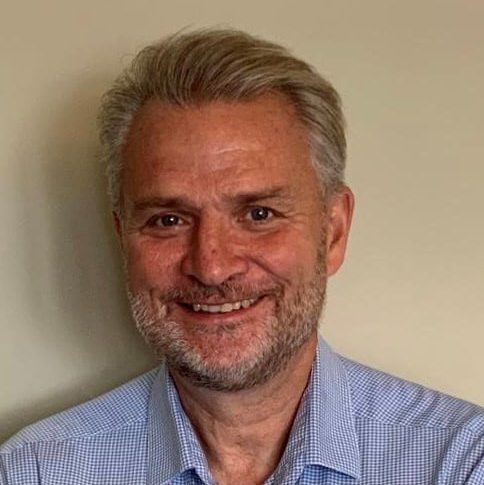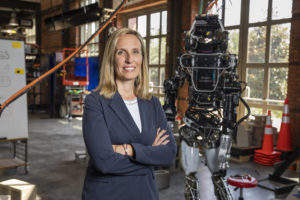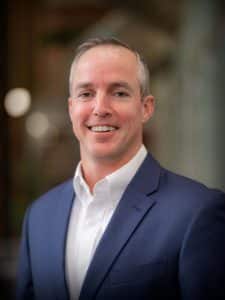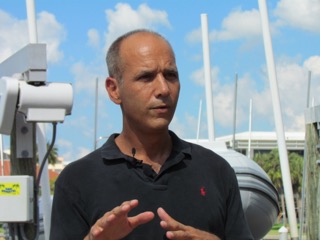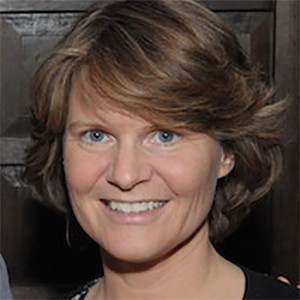Senior Research Sports Scientist Joins IHMC
Published 10.22.21
Dr. Mark Williams, the former Chair of the Department of Health and Kinesiology at the University of Utah and the Editor-in-Chief of the Journal of Sports Sciences, has joined the Florida Institute for Human and Machine Cognition as a Senior Research Scientist.
A native of North Wales, Williams previously held senior leadership positions at Brunel University in London and the University of Sydney in Australia before moving to the United States in 2016. He has published more than 250 articles in peer-reviewed journals in fields ranging from exercise and sports science to experimental psychology to neuroscience.
Williams’ research focuses on the neural and psychological mechanisms that underpin the acquisition and development of cognitive and perceptual-motor skills. In addition to his role at the Journal of Sports Sciences, he also is the editor of the Research Quarterly for Exercise and Sport and the journal Human Movement Science. He is a Fellow of the British Psychological Society, National Academy of Kinesiology, British Association of Sport and Exercise Science and the European College of Sports Sciences.
“Mark has a great international reputation and we’re very fortunate to have him become part of our team,” said IHMC’s founder and CEO Dr. Ken Ford. “As we expand our research with the addition of the new Center for Human Healthspan, Resilience and Performance, Mark will play an instrumental role in helping us establish this facility as a one-of-a-kind research center.”
IHMC’s Bonnie Dorr recognized for her distinguished career
Published 1.20.21
Dr. Bonnie Dorr of The Florida Institute for Human and Machine Cognition has been named a fellow of the Association of Computing Machinery. She is one of 95 fellows ACM is honoring this year for their contributions in computing and information technologies.
Dorr is the associate director of IHMC’s Ocala branch and one of the institute’s senior researchers. She is recognized as one of the nation’s leaders in the field of natural-language processing.
“This is a great honor for Bonnie,” said IHMC CEO Ken Ford. “She has had such a distinguished career. Her expertise extends from cyber security to social computing to artificial intelligence. It is great to see her recognized for the important work she does.”
ACM has members from around the world who work in AI, cloud computing, computational biology, data science, software engineering, human-computer interaction, virtual reality and other areas. The ACM Fellows program recognizes the top one percent of the association’s worldwide membership.
“These men and women have made pivotal contributions to technologies that are transforming whole industries as well as our personal lives,” said ACM President Gabriele Kotsis. “We fully expect these new ACM Fellows will continue in the vanguard of their respective fields.”
Together with her colleagues at IHMC, Dorr has established the new field of Cyber-Natural Language Processing, which brings together expertise at the
intersection of cyber security, social computing, AI, and natural language processing. Her interests focus on cyber-event extraction and natural language understanding for detecting attacks, discerning intentions of attackers, and thwarting social engineering attacks.
Last year, the Defense Advanced Research Projects Agency (DARPA) invited Dorr and a handful of other scientists and engineers from across the country to become part of a group that provides independent assessments of advanced information science and technology as it relates to the U.S. Department of Defense.
Since joining IHMC in 2014, Dorr has led several DARPA projects, including the design of a system to detect and thwart social engineering attacks on the U.S. She also is working on an IARPA project for AI-inspired extraction of multiple viewpoints from language inputs.
Distinguished Exercise Scientist Joins IHMC
Published 10.15.20
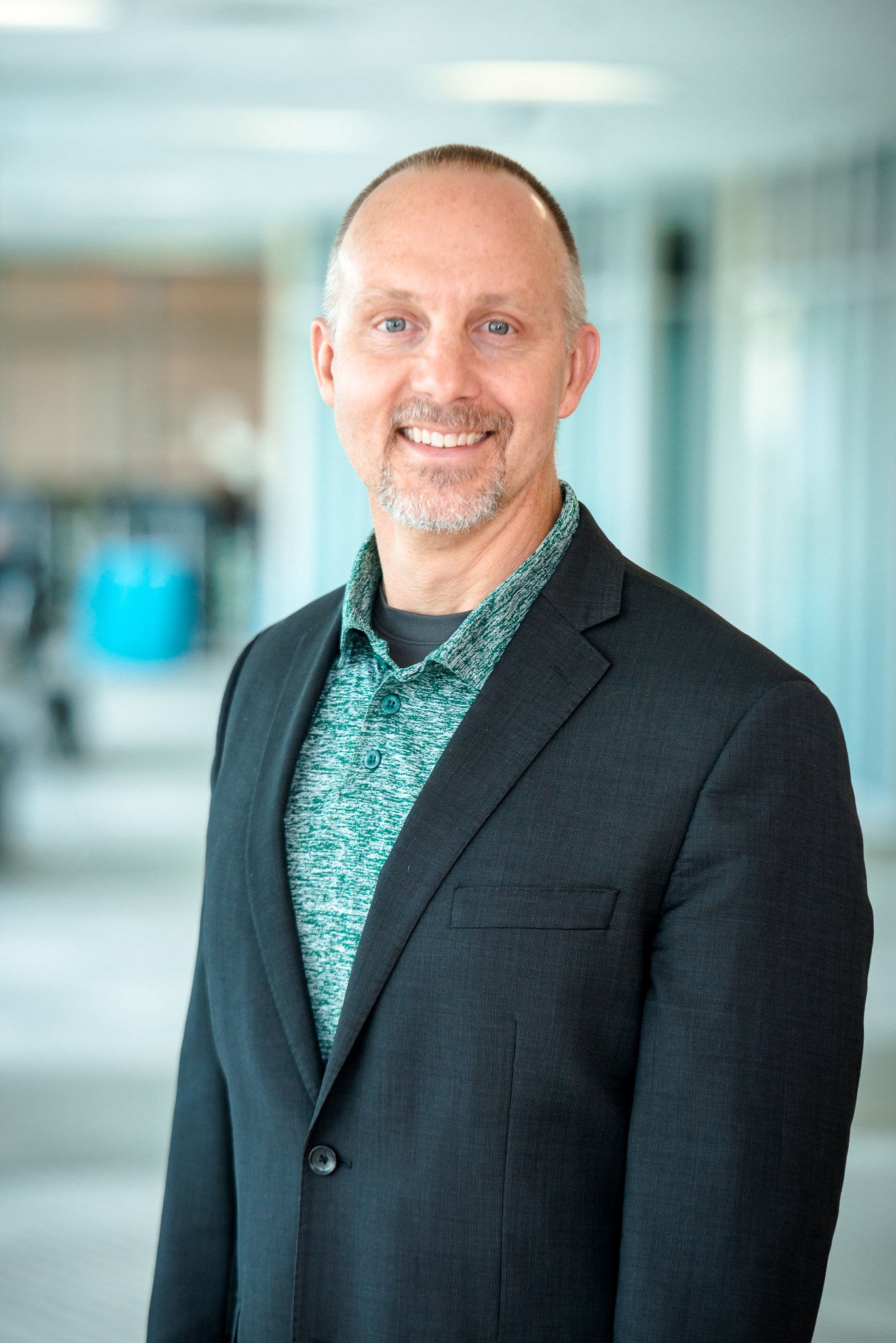 Dr. Marcas Bamman is an internationally recognized researcher known for his scientific contributions to the biology of human skeletal muscle and medical rehabilitation. He is the founder and former director of the University of Alabama at Birmingham Center for Exercise Medicine.
Dr. Marcas Bamman is an internationally recognized researcher known for his scientific contributions to the biology of human skeletal muscle and medical rehabilitation. He is the founder and former director of the University of Alabama at Birmingham Center for Exercise Medicine.
Bamman and the UAB center are recognized as world leaders in the biological mechanisms underlying exercise-induced adaptations and their clinical utility in disease prevention, treatment and rehabilitation. He joins IHMC as a Senior Research Scientist and will become part of a biologically-motivated team that IHMC founder and CEO Ken Ford has been forming for the past several years.
Since its founding in 1990, IHMC has primarily conducted advanced research in the fields of artificial intelligence and robotics. The past few years, however, Ford has been building a research team focused on health span, resilience and performance. IHMC is particularly focused on innovative ways to extend the capabilities and resilience of high-performing humans such as astronauts, fighter pilots, and elite special operators.
“Marcas has become known worldwide for his work in understanding the molecular responses to exercise and how they relate to health and performance,” said Ford. “His research is highly valued by such organizations as the National Institutes of Health, the Department of Defense, NASA and other agencies around the nation. He will be a wonderful colleague.”
Bamman is often featured in national media on how exercise-induced health benefits can impact disease prevention, treatment, and rehabilitation. A 2011 clinical trial of his attracted considerable national attention for showing how men and women in their 60s and 70s who began supervised weight training could develop muscles that were as large and strong as those of the average 35-40-year-old.
“In the later stages of my academic career, I became more and more interested in defense-related research and ways to maximize the performance and resilience of warfighters and special forces,” said Bamman. “IHMC is obviously one of the nation’s top leading-edge research institutes that I came to know quite well after giving a talk there.”
That talk led to a couple of collaborations with the institute and IHMC’s Chief Science Officer Tim Broderick.
“I really appreciate the leadership, vision and mode of operations at IHMC, all of which are centered on research impact,” said Bamman. “The research at the institute is highly innovative and will translate to important consequences and scientific advances. IHMC’s current human performance and resilience research is certainly strong but is just the tip of the iceberg with an exciting future ahead.”
One of the first projects Bamman will work on at IHMC is a DARPA-sponsored program aimed at developing a revolutionary platform to enhance training and resilience of elite service members. Called the Peerless Operator Biologic Aptitude project, it is being developed to increase the biologic aptitude of warfighters in an effort to increase their adaptability and resilience.
IHMC is a not-for-profit research institute of the Florida University System where researchers pioneer technologies aimed at leveraging and extending human capabilities. For more information, visit ihmc.us.
DARPA taps IHMC’s Bonnie Dorr for group to assess agency’s research
Published 6.9.20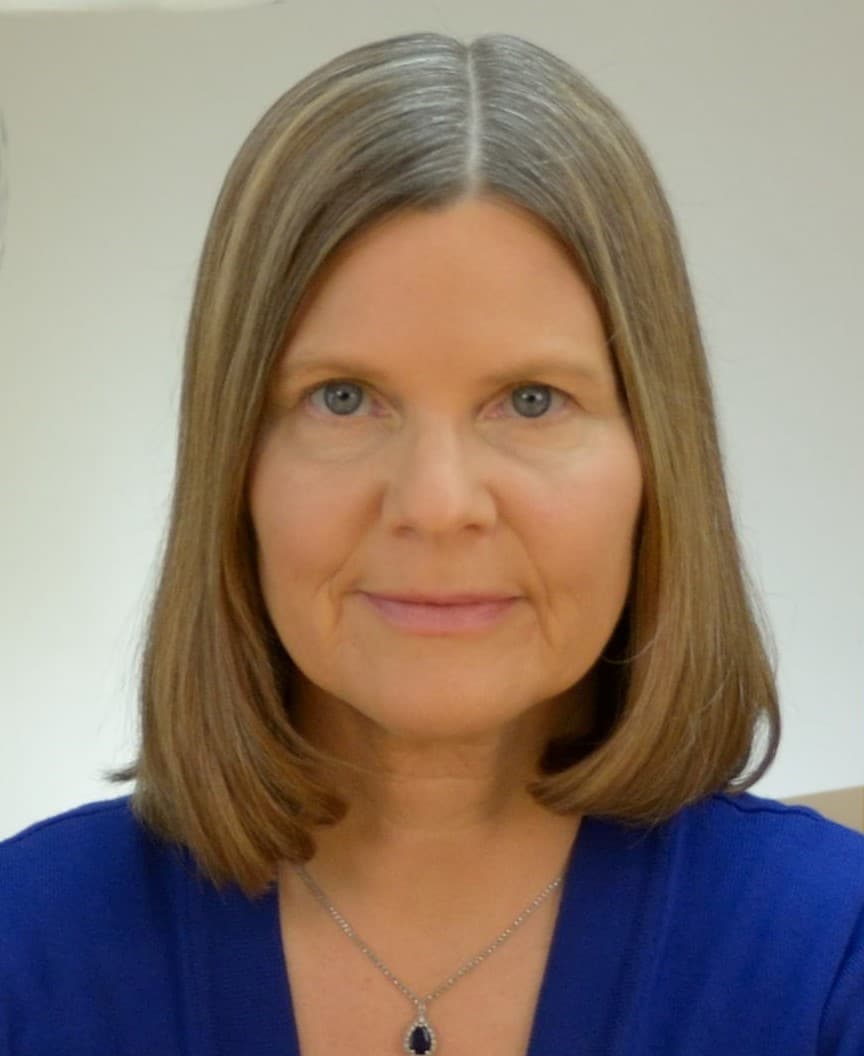
The Defense Advanced Research Projects Agency (DARPA) has named Dr. Bonnie Dorr of IHMC to its Information Science and Technology (ISAT) Study Group for a three-year term.
Dorr is a leading researcher in the field of natural language processing. She serves as an associate director and senior research scientist at IHMC’s Ocala branch. The ISAT Study Group brings together 30 scientists and engineers from across the country who provide continuing and independent assessments of advanced information science and technology as it relates to the U.S. Department of Defense.
DARPA is an agency of the United States Department of Defense responsible for the development of emerging technologies for use by the military. President Dwight D. Eisenhower created the agency in 1958 in response to the Soviet launching of Sputnik in 1957. The agency created the ISAT Study Group in 1987 to support its technology offices and identify future research directions.
“I am truly honored to be part of such a bright and talented group,” said Dorr. “To be able to have a hand in shaping future research for an agency like DARPA is a once-in-a-lifetime opportunity. I’m really looking forward to this.”
Dorr has worked with DARPA on a number of projects since joining IHMC in 2014. She has led the design of a system to detect and thwart social engineering attacks on the U.S. and also is working with a group developing AI-inspired communication.
“Bonnie is one of the top researchers in her field and an excellent choice to serve on the ISAT Study Group,” said IHMC CEO Ken Ford. “I think it’s a real testament to Bonnie that she is one of the few women to have been named to the ISAT Study Group. I hope her leadership and success as a scientist encourages other women to consider computer science and natural language processing as a career.”
Together with colleagues at IHMC, Dorr has established the new field of Cyber-Natural Language Processing, bringing together expertise at the intersection of cyber, social computing, AI, and natural language processing. Her interests focus on cyber-event extraction and natural language understanding for detecting attacks, discerning intentions of attackers, and thwarting social engineering attacks.
UWF and IHMC announce inaugural cohort for state’s first Ph.D. in Intelligent Systems and Robotics
Published 10.8.19
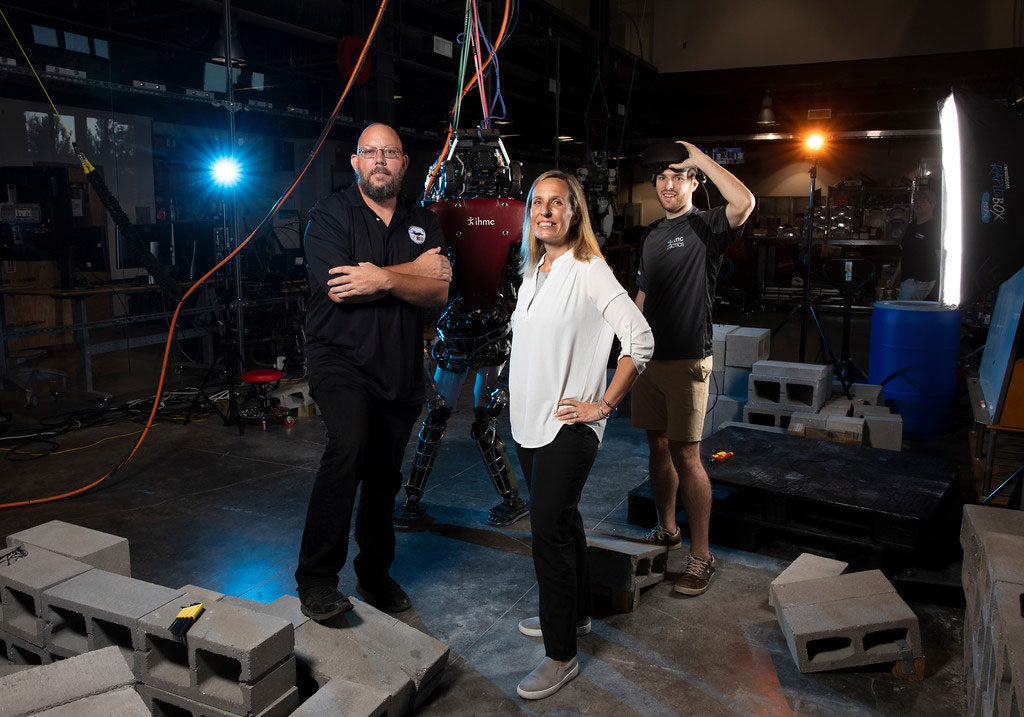 Doctoral program director Brent Venable, center, with Jacques Perry, left, and Duncan Calvert, right
Doctoral program director Brent Venable, center, with Jacques Perry, left, and Duncan Calvert, right
This fall, the University of West Florida and the Institute for Human and Machine Cognition welcomed the inaugural cohort of five students to the newly established intelligent systems and robotics doctoral program.
The program centers on developing leading-edge software and hardware technology that combines human and machine elements to exploit their respective strengths and mitigate their respective weaknesses. It aligns with the University’s strategic vision for research that impacts Northwest Florida’s economic development and technology enterprise. The first of its kind in Florida and one of only a few in the nation, the program will serve the manufacturing, health care, defense and other high-tech industries, providing critical support to high-demand career fields.
“UWF welcomes an esteemed group of eager doctoral students, each with a uniquely impressive background,” said UWF President Martha D. Saunders. “They are ready, and we are confident that UWF and IHMC will guide them to their individual success.”
The doctorate in intelligent systems and robotics program will provide students with individualized paths tailored to their interests. The program is comprised of foundational courses in robotics and artificial intelligence, or AI, that address topics such as knowledge representation and reasoning, machine learning, computational methods in AI, basic hardware/software interaction and research methods.
“Our mission for this program is to develop students into graduates who can step right into opportunities in the workforce that will be ready and waiting for them, to further the field and innovative research,” said Dr. Ken Ford, CEO of IHMC.
Two of the students, Taher Rahgooy and Andrea Martin, transferred to UWF from Tulane University to be part of the inaugural cohort on the heels of Dr. Brent Venable being named director of the intelligent systems and robotics doctoral program. Venable previously held a joint appointment as a professor of computer science at Tulane and research scientist for IHMC. She said her first priority in the program is setting the students up for success in research that interests them.
“The way I see it, my job is to make this an optimal environment and opportunity for all of the participants; the students, faculty, researchers involved,” Venable said. “These students will work in labs with researchers for more than four years and will have a chance to make a difference. From a mentor point of view, this is ‘academic parenting,’ and it’s my job to make sure it’s successful.”
Jacques Perry, a UWF alumnus and military veteran, is another candidate who was accepted into program. Perry has 10 years of cybersecurity experience and currently serves as the lead cybersecurity engineer and information system security manager for the 782nd Test Squadron at Eglin Air Force Base.
Perry completed an internship with IHMC during graduate school, which he said first sparked his interest in AI. When the opportunity arose to conduct AI research that could enhance cybersecurity efforts, along with access to IHMC resources, he didn’t hesitate to apply for the doctoral program.
“My doctoral work will be directly applicable to cybersecurity for Air Force missions,” Perry said. “This degree program will also allow me to gain a leadership position in the Air Force cyber community, where I’ll be able to bring more focus on the capabilities of AI in cyber defense and offense. I eventually expect to see AI playing both strong defensive and offensive roles in cyber warfare, which will inherently require the next generation of cybersecurity personnel to thoroughly understand the capabilities and limitations of AI and how it will shape the cyber battlefield.”
The other students included in the Fall 2019 class include UWF alumni Duncan Calvert, who currently works in the robotics lab at IHMC, and Bhavyansh Mishra, a recent UWF graduate who interned at IHMC in the summer of 2018.
A not-for-profit research institute of the State University System, IHMC is a pioneer of technologies aimed at extending human capabilities through a unique approach combining computer science, cognitive psychology, neuroscience, engineering, medical sciences and related disciplines.
For more information about the Ph.D. in Intelligent Systems and Robotics, visit uwf.edu/isr.
UWF and IHMC announce inaugural director for Intelligent Systems and Robotics doctoral program
Published 7.31.19
The University of West Florida and the Florida Institute for Human & Machine Cognition announce Dr. Kristen “Brent” Venable as the inaugural director of the Ph.D. in Intelligent Systems and Robotics program.
UWF is partnering with IHMC for the program, which begins in Fall 2019. Venable will shape and direct the new program, hire faculty and recruit doctoral students.
“The highly-anticipated doctoral program has found a well-suited leader in Dr. Venable,” said UWF President Martha D. Saunders. “Her expertise in artificial intelligence matches well with the program’s vision to develop thought-leaders in these exciting fields.”
Venable joins UWF from Tulane University, where she held a joint appointment as a professor of computer science and research scientist for IHMC.
“I have known Brent for a long time and she is the perfect choice to head up the new program,” said Dr. Ken Ford, IHMC CEO and director. “Brent has broad expertise in AI and related topics, and we are fortunate that she has agreed to take this position.”
Venable’s primary research interests are within artificial intelligence including constraint-based reasoning, preferences, temporal reasoning and computational social choice. Her research focuses on providing a solid framework for the design and deployment of intelligent systems able to reason about preferences.
“This is an exciting opportunity for me,” Venable said. “I love research and I love working with students, so this position gives me the best of both worlds. I’m particularly excited with the potential we have to develop a unique program in the United States that will have students working on research projects as soon as they set foot on campus.”
Venable began her career in higher education as a faculty member in the Department of Pure and Applied Mathematics at the University of Padova in Italy, where she also earned a doctorate in computer science and a Laurea degree with honors in mathematics.
The new program is the first of its kind in Florida and one of only a few in the nation. It aligns with the University’s strategic vision for research that impacts Northwest Florida’s economic development and technology enterprise. Manufacturing, health care, defense and other high-tech industries will be served by the program, providing critical support to high-demand career fields.
The program will focus on providing students an immersive hands-on research experience from the outset.
“Excitement surrounding the new program has been tangible, and with the announcement of Dr. Venable’s leadership, the excitement grows,” said Dr. Jaromy Kuhl, interim dean of the Hal Marcus College of Science and Engineering. “Her interests and expertise will be instrumental in launching and establishing a competitive program that prepares generations of students for lifelong success.”
For more information about the Doctorate in Intelligent Systems and Robotics program, visit uwf.edu/isr
Ryan Tilley Appointed to the FloridaWest Economic Development Alliance Board of Directors
Published 4.22.19
FloridaWest EDA is pleased to announce that Ryan Tilley of the Florida Institute for Human and Machine Cognition has been appointed to the FloridaWest Board of Directors by the Escambia County Commission. Tilley joins Karen Sindel as one of the two county appointees to serve the community on the economic development alliance board.
Tilley is currently the Director of Strategic Program Execution and Innovation at the Florida Institute for Human and Machine Cognition (IHMC) and is also a partner in two Pensacola based software engineering companies. Prior to joining IHMC, Ryan was the Chief Operating Officer for VetCV Inc., a software application company focused on supporting veterans and their families.
Tilley was also the COO for KontactIntelligence Inc., a leading healthcare industry physician recruitment software platform.
Tilley earned his master’s in Business Administration as well as Bachelor of Science in both Finance and Global Economics from the University of West Florida. He also received his master’s certificate in Entrepreneurship from the University of West Florida. He is married to his lovely wife Kelly and together they have two amazing sons.
“With his experience with technology based companies, Ryan Tilley will be a key asset to our board,” said Scott Luth, FloridaWest. “With our current focus on building the Cyber Security assets in Escambia County, we are looking forward to working with Ryan to create jobs and establish new business.”
“I have a passion for the Northwest Florida region,” Ryan said, “and I am looking forward to driving successful, sustainable, and responsible economic development for our community.”
Former NFL Coach Joins IHMC
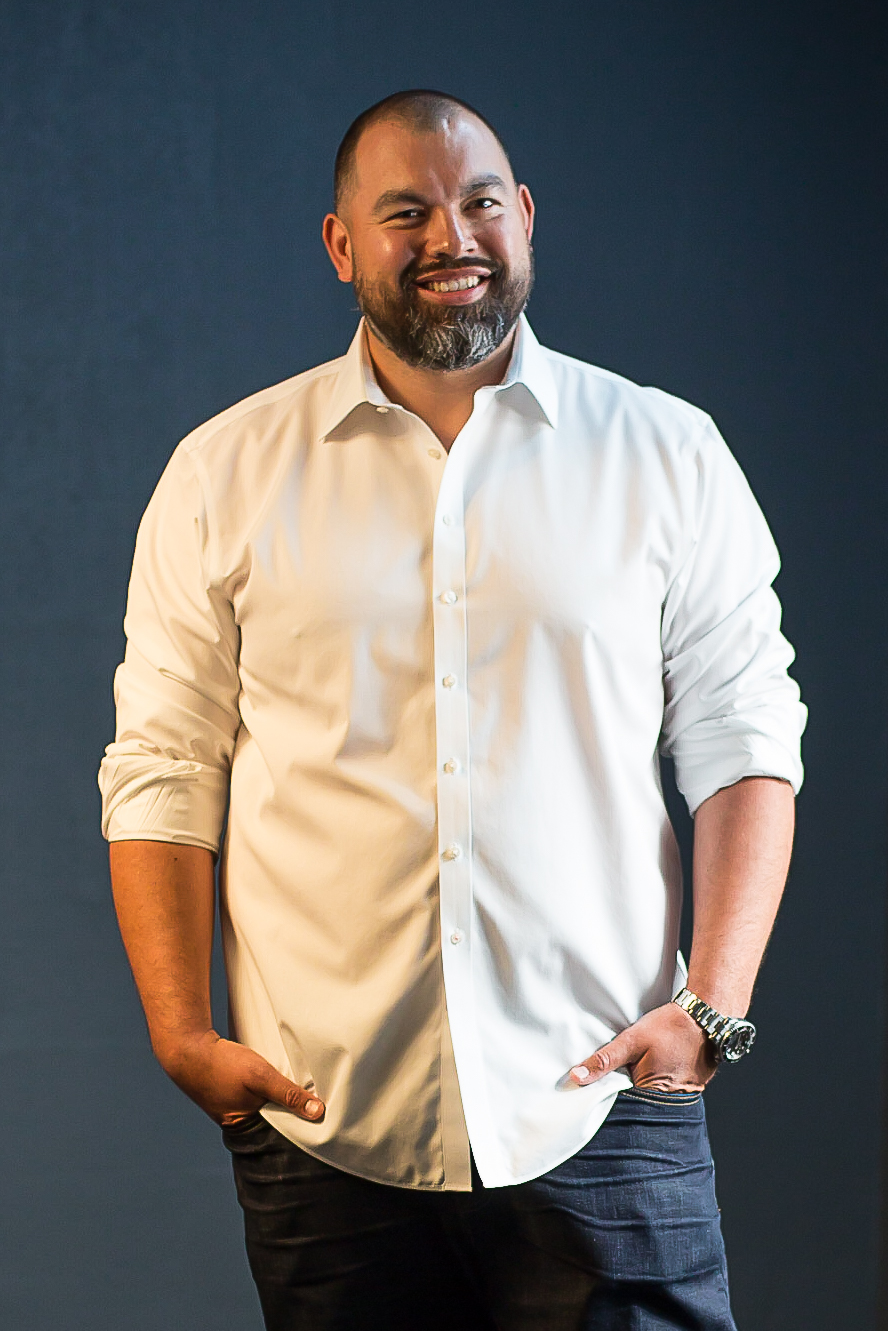 Published 4.9.18
Published 4.9.18
The former Head Strength and Conditioning Coach for the Oakland Raiders who has also worked with the Department of Defense on pioneering human performance programs joins IHMC as the High Performance Director.
Joe Gomes has 17 years of international experience as a head coach and high-performance director responsible for developing staffs and systems that evaluate and prepare elite professional athletes and the elite warfighter for peak performance.
As Gomes transitions into his new role within IHMC, he is focused not only on supporting existing research in human performance and resilience, but also looking to draw from IHMC’s collective expertise to support high performing and elite populations with actionable solutions and countermeasures. He is passionate about supporting career longevity in high performing populations.
“Over the past several years we have broadened our research on human performance and resilience,” said IHMC co-founder and CEO Ken Ford. “Joe brings a wealth of real-world experience in these areas to IHMC and will contribute a great deal to the research we’re doing along these lines.”
In addition to his time with the Oakland Raiders, Gomes spent 2007 to 2010 as the NFL combine preparation director for EXOS, a human performance company. He worked with 35 first-round draft picks, 13 top-10 picks and four first-overall picks, including quarterbacks Matt Ryan and Matt Stafford as well as offensive tackle Jake Long, who was picked first overall in the 2008 NFL draft.
As the Director of Performance for EXOS, Gomes was responsible for the performance systems in four world-class training facilities in the U.S. and five international satellite locations. He worked with teams and players in the NFL, NBA, MLB, NHL, MLS, international professional rugby and soccer teams as well professional tennis and track-and-field athletes.
Prior to joining the Oakland Raiders in 2015, Gomes was the Senior Advisor and Performance Director for the United States Army Special Operations Command at Fort Bragg, N.C.
Florida Inventors Hall of Fame honors Ken Ford as 2017 Inductee
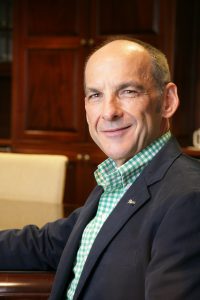
TAMPA, Fla. (Mar. 22, 2017) – The Florida Inventors Hall of Fame announced today that the Florida Institute for Human and Machine Cognition co-founder and CEO Ken Ford is among the eight inventors who will be inducted into the 2017 Florida Inventors Hall of Fame in September.
Ford is being recognized for his pioneering work in artificial intelligence and human-centered computing as well as his significant contributions to the United States and Florida’s technology and research communities. The Hall of Fame particularly highlighted Ford’s role in the 1990 co-founding of IHMC.
The not-for-profit research institute, which is headquartered in Pensacola and has a second location in Ocala, has grown into one of the world’s premier research organizations. Ford was instrumental in bringing scientists and engineers from around the globe to Florida and IHMC to investigate a board range of topics related to building technological systems aimed at amplifying and extending human cognition, perception, locomotion and resilience.
“The list of inductees and their accomplishments is quite amazing,” said Ford. “I am very honored to be included with such a distinguished group of people.”
Ford holds two patents and is the author of hundreds of scientific papers and six books whose topics include artificial intelligence, cognitive science, human-centered computing, and entrepreneurship in government and academia. He joins others from IHMC who have been inducted, including IHMC senior research scientist Jerry Pratt who was inducted into the 2015 Hall of Fame class; William Dalton, IHMC’s board chair who was part of the 2016 class, as well as Dwayne McCay, who joins Ford in this year’s class and is a member of IHMC’s scientific advisory board.
Ford has had a wide-ranging career. In January 1997, he was asked by NASA to develop and direct its new Center of Excellence in Information Technology at the Ames Research Center in Silicon Valley, where he also served as associate center director. In 1999, Ford was awarded the NASA Outstanding Leadership Medal. That same year, he returned to private life in Florida and to IHMC.
In 2002, President George W. Bush nominated Ford to serve on the National Science Board. In 2005, Ford was appointed and sworn in as a member of the Air Force Scientific Advisory Board. In 2007, he became a member of the NASA Advisory Council and in 2008 he was named chairman – a capacity in which he served until October 2011. In 2010, Ford was awarded NASA’s Distinguished Public Service Medal, the highest honor the agency confers.
In 2012, Dr. Ford was named to a two-year term on the Defense Science Board and in 2013 he became a member of the Advanced Technology Board, which supports the Office of the Director of National Intelligence.
This year’s Hall of Fame class also includes Michael J. DeLuca for his groundbreaking technology known today as “voltage scaling,” which significantly increased the battery life of portable communication devices, and the Hall of Fame’s first scientific couple, Drs. T. Dwayne and Mary Helen McCay, who hold 15 joint U.S. patents and have greatly contributed to increased patient safety and improved medical outcomes in facilities nationwide. Other induces include:
Issa Batarseh, whose innovative research led to the creation of the first compact single solar photovoltaic (PV) panel; Phillip Frost, physician, inventor, and internationally-lauded businessman who invented a revolutionary disposable punch biopsy tool; Richard Gitlin, for his inventive research and development in digital communications, broadband networking, and wireless systems; and the late Thomas Maren, for inventing Trusopt®, the first commercialized topical treatment for glaucoma.
Dr. Ford will be inducted at the Florida Inventors Hall of Fame Fourth Annual Induction Ceremony and Gala on Sep. 8 at the Hilton Tampa Downtown.
“We are delighted to be announcing this class of exceptional inventors whose work has greatly impacted Florida and our nation,” said Randy Berridge, who serves on the Florida Inventors Hall of Fame advisory board and as chair of the selection committee.
Nominees, who must have at least one U.S. patent and a connection to Florida, were nominated through an open nomination process and elected by a selection committee comprising distinguished leaders in research and innovation throughout Florida.
“Collectively, the 2017 inductees hold more than 260 U.S. patents,” said Berridge, “Among them are two industry inventors, the founder of one of the nation’s premier research institutes, and representatives of four Florida universities.”
“The accomplishments of this year’s inductees have been recognized by national and international organizations with many other honors and awards,” said Paul R. Sanberg, chair of the Florida Inventors Hall of Fame advisory board, senior vice president for research, innovation and economic development at the University of South Florida, and a 2015 inductee. “We are honored to be inducting them into the Hall of Fame.”
The Florida Inventors Hall of Fame was recognized by the Florida Senate in 2014 with a resolution sponsored by Senator Jeff Brandes that commended the Hall of Fame “for its commitment to honoring inventors and celebrating innovation, discovery, and excellence.” The Hall of Fame is located at the University of South Florida in Tampa and supported, in part, by the Florida High Tech Corridor Council.
More information is at www.FloridaInvents.org or contact info@FloridaInvents.org.
Inventors Academy Honors Prolific IHMC Scientist
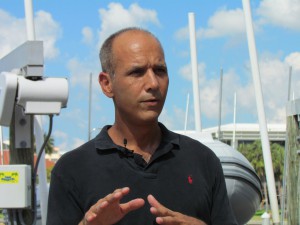 Published 12.13.16
Published 12.13.16
David Fries has been named a prestigious Fellow of the National Academy of Inventors (NAI). David is an interdisciplinary research scientist at the Florida Institute for Human and Machine Cognition (IHMC) and an expert and true innovator in undersea technologies, especially microsystems and robotics for sensing applications, advanced sensor development, and mobile robotic systems for field applications. He holds more than 35 U.S. patents, 13 of which have been licensed to seven separate companies.
David was cited as having “demonstrated a highly prolific spirit of innovation in creating or facilitating outstanding inventions that have made a tangible impact on quality of life, economic development, and the welfare of society.” The NAI was founded in 2010 “to recognize investigators at universities and non-profit research institutes who translate their research findings into inventions that may benefit society,” according to the group’s website.
In addition to his research at IHMC, David is the co-founder of Intelligent Micropatterning LLC, the co-founder and CTO of Spyglass Technologies, Inc., the founder of non-profit SciFlies.org, and the co-founder of Guided Particle Systems, Inc. He has published more than 60 technical articles and has been featured in more than 50 media articles and broadcasts.
Fries is a member of the Marine Technology Society, the American Association for the Advancement of Sciences, the American Chemical Society, and the Oceanography Society. He was an original member of the University of South Florida’s Center for Ocean Technology, where he began the field of underwater mass spectrometry. He also sits on the Board of Directors of the Thunderdome Project, and several other non-profit service organizations.
The NAI Fellows Program currently has 582 Fellows worldwide representing more than 190 universities and governmental and non-profit research institutions. Collectively, the Fellows hold more than 21,000 issued U.S. patents.
NAI Fellows now include more than 80 presidents and senior leaders of research universities and non-profit research institutes, 313 members of the other National Academies (NAS, NAE, IOM), 27 inductees of the National Inventors Hall of Fame, 36 recipients of the U.S. National Medal of Technology and Innovation and U.S. National Medal of Science, 27 Nobel Laureates, 14 Lemelson-MIT prize recipients, 170 AAAS Fellows, and 98 IEEE Fellows. IHMC Director and CEO Ken Ford was named a Charter Fellow in 2012.
David Fries will be inducted during the 6th Annual Conference of the National Academy of Inventors on April 6, 2017, at the John F. Kennedy Presidential Library and Museum in Boston, MA.
Dawn Kernagis Joins NASA’s Undersea Mission
Published 6.22.16
Dr. Dawn Kernagis, a Research Scientist at the Florida Institute for Human and Machine Cognition (IHMC) and host of STEM-Talk, has been chosen as one of six crew members to join NASA’s undersea analog mission, NEEMO (NASA Extreme Environment Mission Operations).
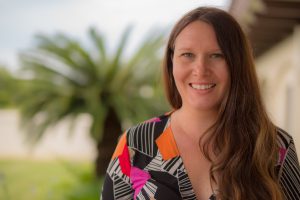 Living on the bottom of the Atlantic Ocean, the 21st NEEMO crew will focus on evaluating tools and techniques being tested for future space exploration by living in simulated spacecraft conditions and conducting simulated spacewalks outside of their undersea habitat. The NEEMO 21 crew and two professional habitat technicians will live 62 feet (19 meters) below the surface of the Atlantic Ocean at the The Aquarius Undersea Reef Base, owned and operated by Florida International University under permit by NOAA and the Florida Keys National Marine Sanctuary.
Living on the bottom of the Atlantic Ocean, the 21st NEEMO crew will focus on evaluating tools and techniques being tested for future space exploration by living in simulated spacecraft conditions and conducting simulated spacewalks outside of their undersea habitat. The NEEMO 21 crew and two professional habitat technicians will live 62 feet (19 meters) below the surface of the Atlantic Ocean at the The Aquarius Undersea Reef Base, owned and operated by Florida International University under permit by NOAA and the Florida Keys National Marine Sanctuary.
Inside the habitat, the international crew will conduct a variety of research and operational studies, such testing a mini DNA sequencer and a medical telemetry device that will be used for future space applications. During their simulated spacewalks, the crew will collect samples for marine biology and geology studies, team with underwater remote operating vehicles, test operational software, and participate in a coral restoration project. Throughout many of these tasks, the mission will also test time delays in communications to simulate scenarios often encountered in space exploration.
NASA astronaut Reid Wiseman will command the first 8 days of the NEEMO 21 mission aboard the Aquarius laboratory. Wiseman flew in space as part of Expedition 40/41 in 2014, spending 166 days living and working in the extreme environment of microgravity aboard the International Space Station. Wiseman was a naval aviator and test pilot prior to joining NASA in 2009.
NASA astronaut Megan McArthur Behnken will command the second half of NEEMO 21 and will live in the habitat for the entire 16-day mission. Behnken has served as a Capsule Communicator for both the space shuttle and space station, and she flew on the STS-125 shuttle mission in 2009. Prior to joining NASA, Behnken obtained her PhD in Oceanography at Scripps Institution of Oceanography.
Joining Behnken for the entire 16 days is Matthias Maurer (European Space Agency). For the first 8 days, Marc O’Griofa (Veterans Administration researcher) will also join Wiseman, Behnken, and Maurer. For the second half of the mission, Behnken and Maurer will be joined by Kernagis and Noel Du Toit (Naval Postgraduate School researcher).
Kernagis is thrilled to have the opportunity as a crew member to combine her background as a diver and a biomedical researcher, and she anticipates a very productive and exciting mission. “The NEEMO 21 crew, researchers, and support staff are the best of the best, and I have no doubt that it will be an incredible mission. We will be conducting a wide array of scientific studies and operational evaluations that will provide a tremendous amount of information for future space exploration and research.” In addition to her participation as a crew member, Kernagis will also be conducting a study to investigate changes to the gut bacteria and to human genes in response to living in such an extreme environment. This research is not only of interest for astronaut health and performance, but also for military and commercial divers who live and work for extended periods of time in similar environments.
IHMC CEO and Director Ken Ford commented on Dawn’s exciting opportunity stating that “through her rare combination of technical diving and scholarly research capabilities, Dawn is leading us into a new field of study at the institute, namely the optimization of human performance, resilience and safety in extreme environments.”
At IHMC, Kernagis studies new ways to optimize performance and resilience for humans operating in extreme environments, such as undersea divers, high altitude aviators, and astronauts. She completed her PhD at Duke University, where she received Office of Naval Research funding to study the genetics of decompression sickness in divers. As a postdoctoral researcher at Duke, she received additional ONR funding to study the mechanisms of oxygen toxicity in divers and a Fellowship Award from the American Heart Association for her clinical development of a neuroprotective therapeutic for acute brain injury.
From 1996 – 2007, Kernagis was a diver and manager with the world-record breaking deep underwater cave exploration team; she has been a diver and consultant for numerous diving exploration and research projects around the world since 1996. Based on her career in underwater exploration and research, Kernagis was recently inducted into the Women Divers Hall of Fame, Class of 2016.
Bill Clancey Named NAI Fellow
Published 12.15.15
As a mathematical sciences major at Rice University in the 1970s, William “Bill” Clancey took courses in 13 different departments—ranging from philosophy and anthropology to art and music.
But it was a cover story in Life Magazine about Shakey, the first robot who could analyze and carry out consecutive commands, that opened up Clancey’s world onto the newly emergent field that he would spend much of his career working on: artificial intelligence.
Clancey was especially interested in the philosophical and psychological underpinnings of artificial intelligence, pondering questions such as: What is the nature of knowledge? What can computers do? Can knowledge be converted into a program?
“You really need to understand people and psychology if you are going to build a smart machine,” he said.
Those initial insights led Clancey down the path of a brilliant career that includes holding six patents and establishing two software companies.
Most recently, Clancey, a senior research scientist with the Florida Institute for Human and Machine Cognition (IHMC), was named a Fellow of the National Academy of Inventors (NAI).
The Tampa-based Academy named a total of 168 Fellows this week, bringing the total number of Fellows to 582. This is the fourth year that Fellows have been named.
IHMC CEO and Director Ken Ford, who is also an NAI Fellow, said, “Bill joins a league of highly distinguished scientists with this recognition. He has made landmark contributions to artificial intelligence research, specifically in evaluating complex human-automation interaction in safety-critical situations.”
Clancey is most well-known for developing a work practice modeling and simulation system called Brahms, a tool for comprehensive design of work systems, relating people and automation.
Using the Brahms modeling system, scientists study the flow of information and communications in real-world work settings, and the effect of automated systems. One important practical application is the coordination among air traffic controllers, pilots and automated systems during flights.
The Brahms system, for example, could be used to help prevent miscommunication when it most matters, or as Clancey said, where “every single second counts.”
One striking example of a situation in which Brahms might have saved the day had it been applied was the mid-air collision between two planes in Überlingen, Germany in 2002 that killed 71 people. The pilots on the two planes received conflicting information from the traffic collision avoidance system (TCAS) and the air traffic controllers, leading to the collision.
“Before TCAS was deployed commercially, engineers verified that the program would give the right advice to separate the planes. What they didn’t consider is if the air traffic controllers gave conflicting advice at the same time,” Clancey said. “This is where Brahms comes in.”
Brahms could simulate, second-by-second, what pilots, air traffic controllers, and others are doing. “It simulates what is on their radar screens, who is talking to who on the radio…. You can see what is happening in a distributed way,” Clancey said.
“AI artificial intelligence systems become players in the overall choreography of what’s happening where many lives are at stake,” he continued. “The Brahms system is very broadly applicable to situations on earth, in air, in space or undersea.”
Notably, NASA applied Brahms to automate routine file communications between the International Space Station computers and support personnel at NASA centers. “In some humble way, if I could say, ‘Why do I deserve this?’ NAI Fellow … it would be the application we made using Brahms at NASA,” Clancey said.
Within the past few years, interest in Brahms has picked up across the government, he added.
“We’re just on the edge of government agencies starting to ask for proposals with this type of capability,” Clancey said. That’s not unusual, he added, since AI research has typically been a decade or two ahead of society’s readiness to apply it.
Clancey predicts that the application of these tools in the aviation world “is a story that’s going to be unfolding in the next few decades,” particularly as the air traffic control system incorporates satellite-based navigation.
Clancey also notes as a professional achievement his early involvement in a project called MYCIN, out of Stanford University. It was a system that attempted to diagnose patients based on reported symptoms and medical test results. Already way ahead of the game, MYCIN, at the outset of its development in the 1970s, was especially designed to prevent the over-prescription of antibiotics.
“If MYCIN had been deployed and used systematically, we might not have had the problem of super infections that we have today,” Clancey said.
Clancey is one of three scientists affiliated with IHMC, including Ford, to be named a NAI Fellow. Alain Rappaport, also a NAI Fellow, is on the IHMC Board of Directors.
The NAI Fellows will be inducted on April 15, 2016, as part of the Fifth Annual Conference of the National Academy of Inventors at the United States Patent and Trademark Office (USPTO) in Alexandria, Virginia.
Dawn Kernagis Inducted into Women Divers Hall of Fame
Published 12.8.15
When Dawn Kernagis went to the ocean for the first time as a nine-year-old, she knew that she wanted to explore its depths.
She had just moved from Iowa to North Carolina. “I became completely intrigued by the ocean,” she said. “I wanted to be a marine biologist. I started to read everything I could get my hands on.”
Her parents gave her scuba diving lessons as a birthday present when she turned fifteen, and she would spend the better part of the next two decades in the sea or studying it.
Recently, Kernagis, who is a Research Scientist at the Institute for Human and Machine Cognition (IHMC) in Pensacola, where her research focuses on risk mitigation for divers, was named one of six women who will be inducted into the Women Divers Hall of Fame (WDHOF) in 2016.
The WDHOF is a non-profit, professional honor society that recognizes outstanding women divers who have made substantial contributions to contributions to the exploration, understanding, safety and conservation of the underwater world. The society also provides financial assistance and mentorship to people interested in pursuing diving careers. Kernagis said she will be working on the scholarship committee, which grants 16 distinct scholarships for different types of diving and training each year.
Kernagis has been nominated for the honor before, and says that she has long admired the women in the Hall of Fame. “Some of them are women I’ve looked up to since middle school, when I first knew I wanted to dive.”
Kernagis’ cave diving career began with a cavern dive in Ginnie Springs when she was a sophomore in high school, and she has completed over 1400 dives.
She was a diver and Project Dive Manager for an international dive team exploring Wakulla Springs and the surrounding cave systems from 1996-2007, where she directed several world record-breaking deep cave dives, including the historic connection and swim-through cave dives between Turner Sink and Wakulla Springs in 2007.
Her experiences both in participating in cave dives and managing underwater exploration teams inspired her studies in undersea biomedical research, and her PhD research at Duke University was focused on identifying the role of that genetics play in decompression sickness in divers. In 2008, she was the first Predoctoral Award recipient from the Office of Naval Research’s (ONR) Undersea Medicine Program, and she has since received additional research awards from ONR on diving medical research.
At IHMC, Kernagis is developing new ways to optimize human performance and resilience in extreme environments, focusing on undersea diving operations.
IHMC CEO and Director Ken Ford, in his nomination letter on Kernagis for the WDHOF, wrote, “Through her rare combination of technical diving and scholarly research capabilities, Dawn is leading us into a new field of study at the institute, namely the optimization of human performance, resilience and safety in extreme environments.”
“Her studies have led us to focus on the identification of genetic predictors or markers of stress that may indicate an individual’s susceptibility to undersea threats such as oxygen toxicity and decompression sickness, as well as the development of novel therapies minimize the risk of these hazards affecting divers,” Ford continued.
“Dawn’s work has far reaching implications in that it applies to a wide variety of situations where the brain is responding to extreme environments, such as those encountered by high altitude aviators, astronauts, special operations forces, and elite athletes.”
Kernagis says she has never had a negative experience herself while diving, but “accidents can happen in those environments” she said, adding that proper training is crucial.
Nowadays, the diving that she does is more recreational. Her segue from diver to researcher has been a natural one, and the impetus is rooted in her childhood, she said.
She remembers playing the game “Why” with her father, in which every answer given has a ‘Why’ that follows. “He had the patience of a saint,” she said. “But I genuinely wanted to know. I see science as a different form of exploration. Research is a form of mental and knowledge-based exploration.”
Two other Florida-based divers—Patti Kirk Gross, a marine conservation educator and coral ambassador, and Ruth Petzold, an underwater photographer—are also being inducted into the WDHOF.
The induction ceremony will take place On April 2, 2016 at the Beneath the Sea (BTS) Awards Banquet in Secaucus, New Jersey.
Undersea Technology Expert David Fries Joins IHMC
Published 11.30.15
The day that a tree can talk—telling you about its ancestry and physical composition, and the air it breathes—is the future that David Fries envisions.
“Rather than sit in a classroom where you have representations of a tree on a white board, you are actually in proximity of the tree and can see visualizations of its chemistry, biology and sustainability,” Fries said.
In practice, this means that a mobile device could see a tree and then start tracing the flow of nutrients from its roots to its branches.
This “fusion of education and entertainment,” Fries said, is one area that he intends to work on as a recently-hired research scientist at the Florida Institute for Human and Machine Cognition (IHMC). The Tampa-based scientist, who has been on faculty at the University of South Florida for two decades, will work at both the Ocala and Pensacola IHMC locations until next summer, when he re-locates to Pensacola.
Fries’ main area of specialization is undersea technology. He holds 35 patents in the field, and is best known for inventing underwater sensors and robots that can determine the extent of oil spill contamination, detect submarines (or other robots), and help take fish counts.
The potential benefits of using such devices are economic, political and ecological.
To take just one example, accurate fish counts via robots (as opposed to using humans on boats, which cause the fish to scatter) can help a state like Florida, with 1,200 miles of coastline, manage recreational fishing.
“Knowing accurately how much is there is important for knowing how long to keep a season open,” and whether or not fish stock enhancements like fingerlings should be put out, Fries said.
“The open question is does that really help a population, or are there more effective strategies to use?” Fries added.
Functional implications aside, these underwater technologies provide us with “an underwater learning cloud,” Fries said. “The ocean begins to tell you its secrets.”
Fries said he looks forward to collaborating with other IHMC scientists focused on the underwater world, such as Dawn Kernagis, who works on risk mitigation for divers and understanding the genetic and physiological factors that can make divers prone to the bends.
“I could see projects emerging between Dawn and I,” Fries said. “I look at myself as a “technology” toolmaker. It’s hard to do good science without these tools, and science questions help drive tool development. There’s a dance between the two.”
IHMC CEO/Director Ken Ford said Fries will be a great addition to the team. “David Fries is a true innovator in undersea technologies. We are thrilled to have him,” Ford said.
He feels IHMC is open to accommodating his creative endeavors as they relate to his pursuit of science. “I tend to be a little out of the box,” Fries said.
Fries has collaborated with a Dutch artist in an exhibit on biomorphic patterns at the Dali Museum in St. Petersburg, and the Schmidt Ocean Institute is supporting his work on using data from the ocean to influence visualizations in live public performances.
“I’d like to continue to look at oceans and technology for art exploration,” Fries said. “The science can inform the art, and the art can inform science.”
Fries also has a practical, entrepreneurial side and enjoys engaging in research that fosters economic development. He has spearheaded several spin-offs from his research already.
“I hope to guide/shepherd some innovations towards economic development out of IHMC in the community,” Fries said. “I really get a thrill of taking an idea and turning it into something and then someone ultimately having a job related to it.”
Fries is originally from Pittsburgh—an “urban street urchin,” he calls himself. But he was smitten by the natural world as soon as he started exploring it.
“When I got into woods and saw another world besides concrete jungle, it excited me,” Fries said. “I ended up being in the blue space instead of the green space, and it’s been a wonderful ride.”
Fries said his work is so engaging, that he doesn’t really have time for hobbies, apart from longboarding to and from work, typically a 5-mile commute roundtrip.
“I’m a 14-year-old kid at heart,” he said.
Undersea medicine scholar joins IHMC
Published 9.10.15
One of the country’s leading lights in the fiel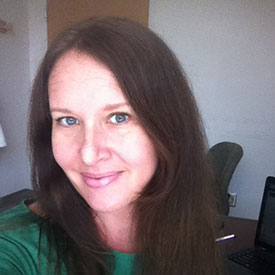 d of undersea medicine has joined IHMC as a research scientist in Pensacola, opening a new area of emphasis for the institute.
d of undersea medicine has joined IHMC as a research scientist in Pensacola, opening a new area of emphasis for the institute.
Dr. Dawn Kernagis, who grew up near Raleigh, N.C., and spent much of her youth cave- and wreck-diving in Florida and around the world, comes to IHMC from Duke University, where her work was considered so pioneering, that she was awarded a grant from the U.S. Office of Naval Research before she even started her doctoral program. It was the first time ONR’s Undersea Medicine program had made such a grant.
She went on to earn her doctorate at Duke in biomedical research and was a post-doctoral fellow there. Her work continues to shed new light on why some divers suffer decompression sickness and others don’t.
“The idea is that some divers are susceptible and some aren’t — because of genetics,” said Dr. Kernagis, whose study will be published later this year.
A big part of her work at IHMC will be focused on optimizing performance and mitigating risk for war fighters in extreme environments. That includes Navy divers, who can face unseen enemies: decompression sickness, oxygen toxicity and nitrogen narcosis. Her location on the Gulf Coast is well-suited for work with the Navy’s Experimental Diving Unit and diver training school, based in Panama City.
“We are very pleased to have Dawn join the IHMC team and I have every confidence that she will play a key leadership role in developing a focused research effort aimed at increasing resilience for operators in extreme environments, such as those working undersea, in space, or in high-altitude aviation,” said IHMC Director / CEO Ken Ford.
Like deep-sea divers, many pilots and astronauts also must deal with decompression and oxygen challenges. Under pressure or when breathed at higher concentrations over an extended period of time, too much oxygen can damage the lungs and trigger seizures in the brain.
“The holy grail in this area is finding a way to prevent oxygen toxicity,” Dr. Kernagis said.
Dr. Kernagis earned her bachelor’s degree in biochemistry from North Carolina State University and was a recipient of the Sigma Xi Undergraduate Research Award. She knows first-hand about the risks and rewards of diving. For more than a decade, she was a diver and dive manager for a world-record breaking deep exploration project focused on the caves in and around Wakulla Springs State Park near Tallahassee.
Dr. Kernagis will also co-host a podcast IHMC plans to launch later this year, featuring some of the most interesting people in the world in science and technology.
“I’m really excited to be here and to have the opportunity to build an undersea program through IHMC,” Dr. Kernagis said.
IHMC Scientist Named To Florida Inventors Hall Of Fame
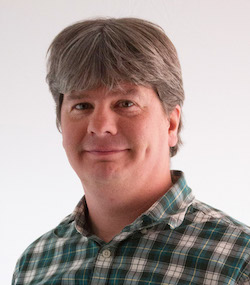 Published 9.10.15
Published 9.10.15
Jerry Pratt, one of the world’s leading researchers in the field of robotics, has been named to the Florida Inventors Hall of Fame, joining an august group of inventors which includes the likes of Thomas Edison.
Pratt, a senior research scientist at the Florida Institute for Human and Machine Cognition (IHMC) in Pensacola, holds four patents on robotics inventions and is considered a rising star in the field. He is one of seven people with Florida connections who will be inducted into the Hall at an October ceremony in Tampa. Others in this group, the second year of inductees, include famed automaker Henry Ford and scientist Robert Grubbs, winner of the 2005 Nobel Prize in chemistry.
“Collectively, the seven 2015 inductees hold more than 430 U.S. patents,” said Randy Berridge, chairman of the selection committee. “Their high merit has been recognized by national and international institutions and communities … and we are honored to be inducting them into the Florida Inventors Hall of Fame.”
Pratt said he was honored and humbled by the recognition.
“Sometimes I think what’s most fun about working in robotics is that we are practically inventing the field every day,” Pratt said. “There’s a long way to go before robotics is a mature field, and I am honored to join so many other people who are working to create the future.”
Pratt, 43, holds a Ph.D. in computer science from the Massachusetts Institute of Technology. Before joining IHMC in 2002, Pratt’s company developed a powered exoskeleton that allowed a person to carry large loads over rough terrain with little effort. His other patents cover technology that allows bipedal robots to know where to place their feet when walking, and to maintain their balance and prevent falls.
Pratt leads a team of researchers who also developed the HexRunner, which last year set a world speed record for legged robots, reaching speeds of more than 30 mph. Pratt’s work has been instrumental in changing the stereotype of robots as clunky machines with jerky movements to ones that maximize speed, agility and biological similarity, said IHMC founder and CEO Ken Ford.
“We’re really proud of Jerry; it’s a well-deserved honor,” Ford said. “Jerry’s work personifies the subtle and rather beautiful virtuous cycle between the acts of invention and of scientific discovery.”
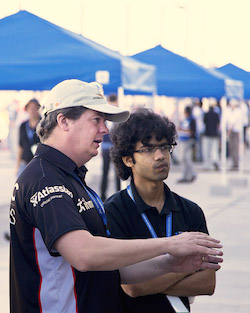 In June, Pratt and the IHMC Robotics Team will compete in the final round of the Defense Advanced Research Projects Agency’s (DARPA) international robotics competition, which tests the ability of humanoid robot systems to respond to disasters. The team placed first in the Virtual Robotics Challenge, a computer simulation, and second in the DRC Trials at Homestead Miami Speedway using actual robots in a competition featuring 26 teams from around the globe.
In June, Pratt and the IHMC Robotics Team will compete in the final round of the Defense Advanced Research Projects Agency’s (DARPA) international robotics competition, which tests the ability of humanoid robot systems to respond to disasters. The team placed first in the Virtual Robotics Challenge, a computer simulation, and second in the DRC Trials at Homestead Miami Speedway using actual robots in a competition featuring 26 teams from around the globe.
Pratt is married to former Pensacola City Councilwoman Megan Benson Pratt. They have two children. The couple co-founded the Pensacola MESS Hall, a hands-on learning center where kids explore Math, Engineering, Science and Stuff. It is a spinoff of IHMC’s Science Saturdays education outreach program.
The Florida Inventors Hall of Fame, begun in 2013, is based in Tampa and seeks to recognize the leading scientific and technological accomplishments in the state. Nominees, who must have at least one U.S. patent, are submitted through an open nomination process and are elected by a committee of distinguished leaders in research and innovation throughout Florida.
For more information on the Hall of Fame and the complete list of inductees, visit www.floridainvents.org.
IHMC Scientist featured at inaugural STEM Symposium
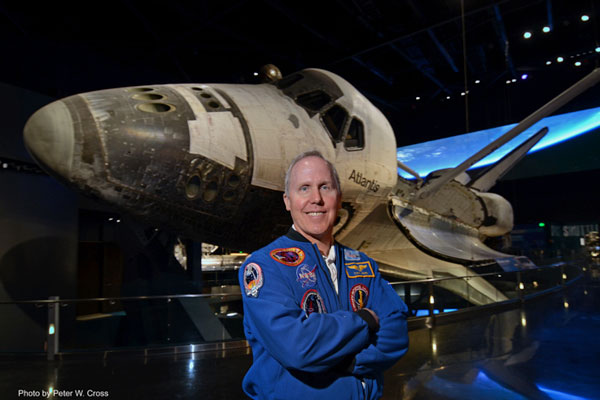
Published 9.2.15
Veteran Shuttle astronaut Tom Jones, a senior research scientist at the Florida Institute for Human and Machine Cognition (IHMC), will be a featured speaker at the first-ever X-STEM: Extreme STEM Symposium in Washington, D.C., on April 24.
The symposium opens the third annual USA Science & Engineering Festival Expo and Book Fair, April 26-27, hosted by sponsor Lockheed Martin. Held at the Walter E. Washington Convention Center, X-STEM is a “TED-style” event for kids with talks by 50 of the nation’s most noted science, technology, engineering and mathematics (STEM) professionals representing top universities, corporations, non-profits and governmental agencies.
“I’m honored to speak at X-STEM and get to meet some of our future explorers,” Jones said. “Exciting our young people about science, technology, engineering and math — so they can write the next chapter in the history of space exploration — is crucial to America’s future. I hope I can help energize tomorrow’s explorers, scientists, inventors and entrepreneurs. They’re the ones who will revitalize and maintain our competitive, vibrant economy.“
Jones is a veteran NASA astronaut, planetary scientist, author and speaker. He flew on four space shuttle missions, and led three spacewalks at the International Space Station (ISS) to help install the U.S. science lab, Destiny.
The Wall Street Journal named Jones’s book, “Sky Walking: An Astronaut’s Memoir,” one if its “Five Best” books on space. He writes frequently on space exploration and history, and offers regular on-air commentary about the United States’ space exploration activities and plans.
An Air Force Academy graduate, he earned a Ph.D. in planetary sciences from the University of Arizona, conducting a telescopic search for water on asteroids. He flew B-52 bombers for the Air Force, studied solar system exploration concepts for NASA, engineered CIA intelligence-gathering systems, and served on the NASA Advisory Council. His current interests are asteroid exploration and resources, planetary defense, and extending human exploration to the Moon, asteroids and Mars.
Jones’ current books include “Planetology: Unlocking the Secrets of the Solar System” (written with Ellen Stofan, Ph.D.; National Geographic), and “Hell Hawks!” (written with Robert F. Dorr; Zenith Press), a true story of an aerial band of brothers in World War II.
Founded by serial entrepreneur Larry Bock and Lockheed Martin CTO Ray O. Johnson to address the severe shortage in science and tech talent, the USA Science & Engineering Festival is the nation’s largest science festival. More than 250,000 people are expected to attend.
Geared toward middle and high-school students, X-STEM features interactive presentations and workshops by top STEM role models and industry leaders to inspire students about STEM careers. Sessions will cover a wide array of subject areas, including space exploration, storm chasing, oceanography, the science of social networks, the physics of superheroes, mathematical puzzles and more.
For more information, visit www.USAScienceFestival.org.
Bradshaw to chair new Nissan advisory board
Published 9.2.15
IHMC Senior Research Scientist Jeff Bradshaw has been named chair of the inaugural Scientific Advisory Council for the Nissan Research Center — Silicon Valley, in Sunnyvale, Calif.
The advisory group will give guidance on matters of science, technology, research and other similar topics of special interest to Nissan Motor Corporation. That includes research regarding autonomous vehicles, connected vehicles, human machine interactions and other matters of special interest to Nissan.
“I’m excited to work with this stellar group of experts,” Dr. Bradshaw said. “Nissan’s commitment to a human-centered, rather than a technology-centered, design approach puts them in a unique and enviable competitive position. As a result, they will produce well connected, environmentally aware and highly capable vehicles that excel in their safety, usability and usefulness.”
The other members of the board are James Euchner, vice president of Global Innovation, Goodyear Tire & Rubber Company; Dr. Don Norman, co-founder of the Nielsen Norman Group; Dr. Missy Cummings, associate professor at Duke University and director of the Humans and Autonomy Laboratory; and Dr. Terry Fong, director of the Intelligent Robotics Group at the NASA Ames Research Center.
Human-Agent-Robot Teamwork has been a central interest for Dr. Bradshaw. From 2002-2006, IHMC’s KAoS framework was used as part of a NASA series of annual two-week field tests of human-robot teams led by Dr. Bill Clancey and Dr. Maarten Sierhuis performing simulated planetary surface exploration at the Mars Desert Research Station in the Utah desert. With Dr. Sierhuis he co-founded and, with the help of Dr. Catholijn Jonker and Dr. Virginia Dignum, organized the Human-Agent-Robot Teamwork Workshop series (HART). Recently, Dr. Bradshaw led an international workshop for the National Academies of Science (NAS) on Intelligent Human-Machine Collaboration.
In collaboration with Dr. Paul Feltovich, Matt Johnson and Dr. Robert Hoffman of IHMC, and Dr. David Woods and others, Dr. Bradshaw has co-authored a series of influential articles relating to the inadequacies of the supervisory control model, the “myths of autonomy,” and the virtues of what Johnson has termed, developed and championed as “coactive design” — an approach to human-machine interaction that contributed to IHMC’s leading performance within the DARPA Robotics Challenge program.
Nissan, Japan’s second-largest automotive company, is headquartered in Yokohama, Japan, and is part of the Renault-Nissan Alliance. Operating with more than 236,000 employees globally, Nissan sold more than 4.9 million vehicles and generated revenue of $116.16 billion in fiscal 2012.
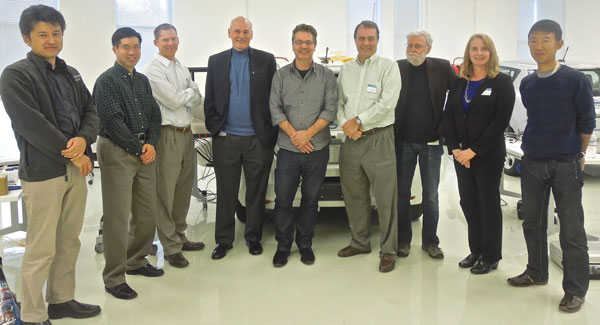
IHMC Senior Research Scientist Jeff Bradshaw has been named chair of the inaugural Nissan Scientific Advisory Council (SAC). Pictured from left to right: Yoshitaka Deguchi (Nissan Research Center-Sillicon Valley, Principal Researcher); Terry Fong (member, SAC); Greg Dibb (NRC-SV, Senior Manager of Strategy and Operations); Jim Euchner (member, SAC); Maarten Sierhuis (NRC-SV Director); Jeff Bradshaw (Chair, SAC); Don Norman (member, SAC); Missy Cummings (member, SAC); and Takeshi Mitamura (General Manager, Nissan Mobility and Services Laboratory).
Dr. Bonnie Dorr joins IHMC as an associate director, senior scientist
Published 9.2.15
Dr. Bonnie J. Dorr, a leading researcher in the field of natural language processing, is joining the Florida Institute for Human & Machine Cognition (IHMC) as an associate director and senior research scientist at IHMC’s Ocala facility.
Natural language processing is a growing research field at IHMC, and Dr. Dorr’s expertise is at the cutting edge. Her extensive research and project management experience includes deep language understanding and semantics, large-scale multilingual processing (including machine translation), and summarization.
“We’re clearly pleased to add someone of Bonnie’s expertise and accomplishments,” said IHMC Director/CEO Ken Ford. “Her vision, passion and experience make her a perfect fit for IHMC.”
Dr. Dorr joins IHMC from the University of Maryland, where she was a professor in the Institute for Advanced Computer Studies and the Department of Computer Science. She was an associate dean of the College of Computer, Mathematical and Natural Sciences, and co-founded the Computational Linguistics and Information Processing Laboratory. She was also principal scientist for two years at the Johns Hopkins University Human Language Technology Center of Excellence.
In 2011 she became a program manager at the Defense Advanced Research Projects Agency (DARPA), overseeing research in human language technology. Her significant DARPA projects include Broad Operational Language Translation (BOLT), Deep Exploration and Filtering of Text (DEFT), Multilingual Automatic Document Classification, Analysis, and Translation (MADCAT), and Robust Automatic Transcription of Speech (RATS).
“I’m thrilled to be joining IHMC,” said Dr. Dorr. “It’s the part of the country where I want to live and work, and it’s exactly the position I’d like to be in. And there are so many talented researchers I will be working with — who could ask for more?
“I believe IHMC is the gem of human-centered technology research in Florida. It’s not a startup, its not a university, it is something in between that allows me the freedom to move quickly and to take on new challenges with a great group of people. I see a huge opportunity to make a difference. I just want to build to that level of excellence we have seen in IHMC robotics, and I know we can do that.”
Dr. Dorr, who will retain collaborations with UM as emeritus professor, called IHMC “the perfect place” to continue liaising with both government and universities while also broadening her impact. “It lets me work in the applied world where I can address real-world problems of national importance.”
She holds both a Master’s and a Ph.D. in computer science from the Massachusetts Institute of Technology, with a bachelor’s from Boston University. She is a Sloan Fellow, a NSF Presidential Faculty (PECASE) Fellow, and a former president of the Association for Computational Linguistics.
Dr. Dorr is married (Stephen Martin) and has three children.


